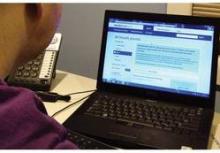Patients in eight states could be in for a big surprise when they reenroll for health insurance coverage through the federal marketplace.
The Health & Human Services department announced Oct. 26 that residents in Oklahoma, Montana, Alaska, New Mexico, South Dakota, North Carolina, Oregon, and Tennessee will see at least a 20% rise in premiums for benchmark plans. Leading the way is Oklahoma with a 35.7% increase, followed by Montana (34.5%) and Alaska (31.5%).
Open enrollment for 2016 begins on Nov. 1.
Four states will see a decline in benchmark premium rates, the largest occurring in Indiana (–12.6%), followed by Mississippi (–8.2%), Maine (–1.2%), and Ohio (–0.7%).
Across the 37 states in the federal marketplace, premiums for benchmark plan will increase on average 7.5%. In 2015, there were 8.8 million people enrolled in benchmark plans.
HHS also reported that next year, nearly 8 in 10 returning patients will be able to buy a plan with premiums less than $100 after tax credits, while 7 in 10 will be able to spend $75 or less after tax credits.
Patients in more than two-thirds of counties covered by the federal marketplace will be able to choose from three or more plans. HHS also noted that in the second open enrollment period (2015), those who switched plans within the same tier saved an average of nearly $400 on their annualized premiums after tax credits, compared with those who did not switch.

